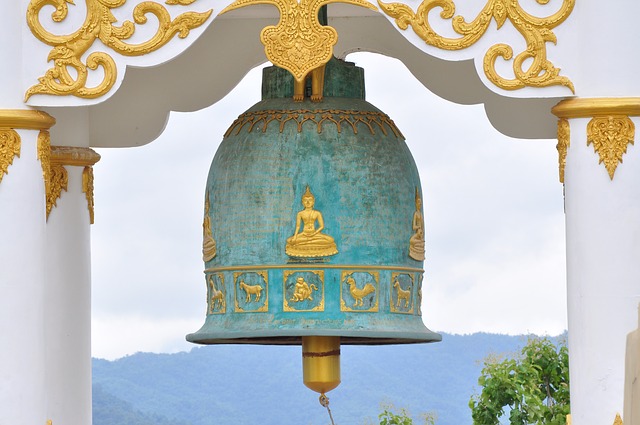Once upon a time, a cat found its way into a monastery high up on the mountains. In the evenings when the monks gathered to meditate, it would make loud noises which would disturb them. So, the teacher ordered the cat to be tied up and put away during the evening meditation. Years passed by this way and the cat would be tied up every evening and released afterward to play around. One day the teacher died, but this tradition continued. One day even the cat died, but the tradition continued as another cat was brought to the monastery to be tied up. Centuries passed by this way and people started tying up cats everywhere in the hope of spiritual bounty. Some even started worshipping the cat instead of meditating. And many religious leaders wrote at length about the spiritual significance of the tied-up cat and its relevance to meditation practices. ~ Adapted from a famous Zen Koan.
This Zen story is a simplistic example of how superstition sets in and perhaps also an indication of how human consciousness is easily attracted and aligned to symbolism than the more abstract and subconscious spiritual practices. For instance, it is a lot easier to worship a visual form of Krishna in yellow outfit or Christ on the cross or Shiva with a trident, than it is to meditate upon supreme consciousness that has no shape. What do you do once you close your eyes? Who do you think about? Who do you pray to? Moreover, if we don’t have something visual to focus on, the mind will keep jumping from one random thought to another. The ancients understood this and recognized that we need something visual to make the mind one-pointed.
It is perhaps for this reason that most ancient religions used metaphors and symbols extensively to convey esoteric concepts. It is indeed unfortunate that over centuries of transmitting this knowledge from generation to generation – we retained the metaphors and symbols but lost their significance. And when we do not understand the real value of what we are doing but follow it merely in the name of tradition, it becomes superstition.
For instance, the first thing we do when we enter the temple is to reach out for the temple bell. It is such an automatic and mechanical act that we rarely stop to think about it or savor the sound vibrations that emanate from it. We now even have the electrical machinery to recreate the sounds of traditional temple instruments without any manual intervention. It is all pretty fancy – but does it meet the original purpose?
Why do we ring a bell in the temple?
Is it to inform the powers that be that we have arrived? …To dispel bad energies? Because it is auspicious? Neither.
The sounds created by various instruments at the temples are said to mimic some sounds which are heard by a yogi in the higher stages of meditation. The texts say that as we progress in meditation, we encounter ten different sound vibrations which are called Nada or Anahata sounds. Anahata means un-struck and the Zen describe it best when they say – these sounds are like the sound of one hand clapping. The sound of a bell is one of the ten sounds – it is, in fact, the third in sequence. The other sounds are of the conch, flute, cymbals and so on. Isn’t it fascinating that all these sounds are so easy to find across the temples?
If you have an existing meditation practice, you might be familiar with meditation induced tinnitus – it is not a medical condition but simply the increased sensitivity to sounds which manifests only in deep concentration. The Buddhists even have a name for it and call it Dibba Sota.
Thus, the temple bell, when it is made of specific metals, in a particular proportion was a re-creation of a sound that the seers of the ancient age heard during their meditation. They re-created it for us so in the physical world, so we would be guided in our efforts and would recognize that familiar sound when heard within. But rare is the person who is trying to listen to these sounds within.
A couple of years ago I was in Varanasi at the famous Kashi Viswanath temple. It was indeed a ruckus with everyone wanting to get ahead to ring the temple bell loudly and repeatedly. As the long queue approached the sanctum sanctorum (Garbhagriha) the mood became competitive with some pushing and shoving as everyone wanted to get ahead, as if God’s mercy was limited and running out of stock. It is a tragic state of affairs because that bell needs to sound inside our hearts. That vision of sanctum sanctorum is meant to be recreated in our consciousness. What we see at the temple is a likeness, a sacred representation. We need to put in the effort and hard work to find that with-in our selves – if we don’t do that, all other superficial efforts are meaningless.
Does this mean idol worship is irrelevant?
No. Arjuna asked Krishna this very question in the Bhagavad Gita – who is a better devotee? The one who worships by visualizing God as an idol with form or the one who adores him as the supreme reality without any form?
Krishna answered that both devotees eventually come to him – but the path of worshipping a formless concept is much harder as humans are body conscious beings. It is easier to build affinity and association with something that has a form that we can see, feel, touch, chant, clothe or decorate than with something that doesn’t exist, can’t be explained or articulated.
So, symbols and idols were chosen by people as per what inspired the greatest devotion in them. They were a means to an end because what we need for meditation is a concept of God that speaks to our heart so our journey can be intuitive. This choice can vary by individual – All of us don’t have to worship the same visual form of God any more than all of us have to like the same color or food. End of the day it is not the symbol or God we choose that matters but how far we progress with our chosen object of worship. A thought emphatically stated by Sage Patanjali in his Yoga Sutras.
“Or [Steadiness of the mind is attained] from meditation upon anything of one’s inclination” ~ Yoga Sutra 1.29
Krishna had said in the Gita that it is better to have knowledge without practice than to practice mechanically without understanding what we’re doing. Today, most of what we do is mechanical worship focused more on the superficial aspects than the much more laborious and excruciatingly humbling task of internal transformation. It is better to invest time to study the ancient concepts than to make rituals the cornerstones of our spiritual efforts. We don’t need more cats in the monastery, do we?





